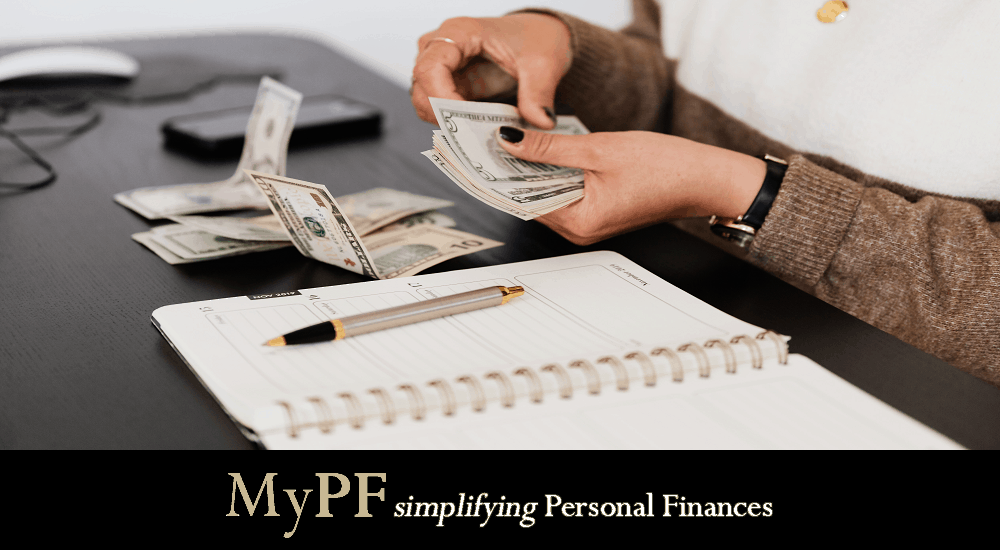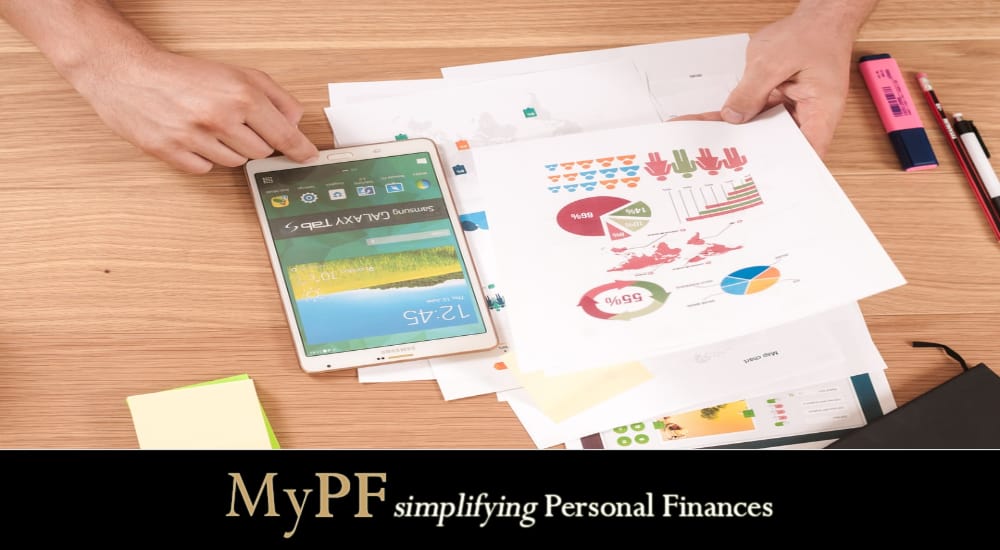After experiencing a financial setback that almost drained your savings, the uncertainties continue. How are you able to maintain your standard of living in the days after? How soon can you deal with another financial crisis? Stabilize your finances as soon as possible by learning how to create a Personal Financial Recuperation Plan.
Most people know the value of having an emergency fund to help mitigate future unexpected financial difficulties. With it, you can weather a financial storm.
But, what happens next once the storm is over and your emergency fund is at zero? How do you rebound fast to quickly prepare for the next financial storm that might be on the horizon?
A Personal Financial Recuperation Plan (FRP) provides a solution.
After an unplanned and devastating expense depletes your savings, the FRP is a roadmap to returning to financial stability. A well-planned and well-executed FRP will guide you in increasing your savings, your assets and income. It ensures you can quickly bounce back and get ready for the next major financial catastrophe. Nobody wants to face the fear of having little or no money saved for emergencies.
Here are 9 steps to follow to create your own FRP.
Contents
Step 1: Acknowledge and accept your present financial situation.
To start your FRP, you need to get a grip on your emotions and focus on dealing with the facts.
If needed, allow yourself space to grieve and let any bitterness run its course. Let the emotions flow up, over, and then out.
Despite the misfortune you have encountered that has set you back financially, you are still alive here and now, and it is time to quickly take charge to prepare for future unexpected circumstances.
Look at yourself in the mirror and tell yourself “I need to do this and I can do it.”.
Step 2: Get a status update on your current finances.
Before you develop a realistic plan, you need to know the state of your finances and what you want to achieve. It does not differ from using the road map to plan your trip from point A (starting point) to point B (your destination). Find out your point A first.
To help you review your current financial situation, answer the following questions.
- What have you got (your assets)?
- Do you have any debts? Who are the creditors? How much is the balance outstanding? Due dates?
- How much savings must you have that will put a broad smile on your face?
- How much is your monthly income? Where are the sources?
- What is your monthly spending? (As detailed as possible.)
- Verify your credit rating?
Getting this information on paper will give you a detailed overview of your existing financial status.
Step 3: Be honest to your loved ones about your financial situation.
To some people, this step is a no-no. If have to, they find it difficult to do and treat it as a step of last resort. Because of the ego and not wanting others to know about their financial follies, they kept their misery to themselves.
That should not happen. Instead, accept whatever help offered, but you must also work double-times to earn more money. For your loved ones and friends you trust, be honest about your new financial situation. They may assist you financially or provide you with ways to make money and put you back in a good financial position. Your mates would also understand when you have to say no to a night out.
Step 4: Set financial objectives
Develop short- and long-term financial goals. With these financial objectives, it helps you to stay on track. Over time, these priorities will help you reassess your budget (see Step 5 below) and adjust your spending and savings accordingly. And as you return to healthy finances, you will find great joy in achieving these goals.
- Get your emergency fund back to a level comfortable to you
An emergency fund should be the number one priority for your savings goals. You need to figure out what amount it should be at. The general rule is three (3) to six (6) months’ worth of your living expenses. But don’t let this rule restrict you from saving more. Some people have set twelve (12) months’ worth.
Go slow since you are still in recovery mode. Perhaps start with 3 months’ worth and as your finances get better, you can revise it progressively to 6-, 9-, and 12-months. Whatever target and timeline set depends on your earning power and lifestyle. You can save more and faster if you earn more and spend less. If unsure, speak to a financial advisor (refer to step 9).
- Continue to invest – Never neglect your mid-term and long-financial needs
Looking at history, a recession doesn’t last forever. So, while striving to handle the current needs, you should not risk your long term financial wellbeing.
After you get your emergency funds in order, you can shift into the setting of medium and long-term savings targets. For starters, say, save for a holiday or house repairs funds. From there, you will optimize your investment prospects elsewhere. If you in doubt, again, it’s best to speak to a financial advisor.
The most potent investment weapon open to investors is compounding interest or interest gained on your interest. Use it while time is on your side.
Step 5: Re-budget (additional restrictions required)
Change your budget allocation. Restore financial stability through saving and investing further.
Review your existing budgeting strategy and find places to keep costs low and save more money. You can’t compromise on this! The more you can reduce costs, the healthier your financial situation.
- Rank your spending
You need much more detail in planning your expenditures because the money you have to spend is much smaller now. Instead, focus on spending money on what matters most – your needs, not your desires. And if you need to pay off certain loans, focus on the debt with maximum interest rates.
- Earn more
If you have the extra time to commit, seek additional sources of revenue. There are often many opportunities to earn additional income such as working with a ride-sharing program, part-time work, or freelancing. It will speed up your path to financial recovery.
Step 6: Get in touch with your creditors as soon as possible
You need to pay your debts, regardless of your financial circumstances.
But, after experiencing a financial setback, it is possible that you can’t pay all of your debts on time. You may think of avoiding them. Don’t!
Instead, communicate with these creditors and negotiate a new payment agreement that you can abide by.
All your lender wants is their money. If you call them before the due date has passed, they will surely consider your request. Otherwise, you have limited options if the debt falls under the collection department.
Step 7: Execute your action plan
Now that you have finished your plan, time to do the execution. But for many people, taking action appears disconcerting.
A plan, no matter how thorough, serves no purpose until it becomes a reality. Until you do something, nothing takes place. Action is the enabler that transforms objectives into concrete results. You must take action.
Many people dream of changing their financial circumstances, but few take meaningful action, which makes the difference. The desire to consistently take effective action toward an aim distinguishes between those who are most successful and those who are not.
Refer to your plan and start taking steps to act on it.
Step 8: Conduct monthly budget reviews.
As the months go by, you will expand your budget and removing some of your spending restrictions. Every few months, or as you see fit, you can review your expenses. Adjusting your budget is also a great way to understand where your finances stand. How ready were you for financial danger? Are you on the path to reach your objectives? Instead of relaxing the controls, perhaps you should look at a more stringent budget.
Here some tips on what to do in a budget review:
- Compare: actual and planned expenditures.
- Monitor your expenses all month long.
- Determine if you have overspent or underspent or stayed within the monthly budget.
- Estimate additional income and expenses.
- Any lifestyle change can lead to an increase or decrease in revenues or expenses. Incorporate these in the next month’s budget.
- Go over your financial targets.
- Financial targets may also change from one month to the next. Once you have set a target, it is important to include it in your budget to reach it.
- Make adjustments to your budget to suit your needs.
- Once you have established a base income, spending and financial targets for the next month, adjust your budget accordingly. This can be as easy as reducing unnecessary spending and transferring money from one spending category to another.
- Determine and clean up budget leaks.
- The budget assessment process can reveal hidden issues in your expenses, known as budget leaks. To resolve these, impose additional constraints on your expenses.
- Go through your budget every month and every year.
- Evaluate your new budget at the end of the month to make sure the changes truly work. Carrying out this monthly financial audit on a regular basis will not take much time and will help you optimize your budget over time.
Step 9: Seek help from a licensed financial advisor.
Whatever your financial problems, a skilled financial advisor can help you. Perhaps you are unsure of your financial literacy or don’t have time to commit. The best option is to seek the help of an external expert. They will meet with you and work through the above steps to generate a unique FRP, including tracking the implementation of the action plan.
This is an option worth deliberating on early in your FRP process if you are less financially-savvy.
Conclusion
Getting over a financial setback is like running a marathon. It may take many months or even years to be financially comfortable as before. But, most times, it’s achievable. What it takes are determination, patience, and good planning.
Signup for a MyPF membership and get connected to a licensed financial advisor.
You May Also Like
- 7 Tips To Improve Your Cash Flow
- 5 Tips To Help You Get a Grip on Financial Stress
- How To Manage Your Debt Efficiently
- 5 Steps Taken to Avoid Making Financial Mistakes During Crisis
- 4 Tips To Have An Effective Review Of Your Personal Finances
Do you have any other step not included here? Please do share through the comment section.














Leave A Comment